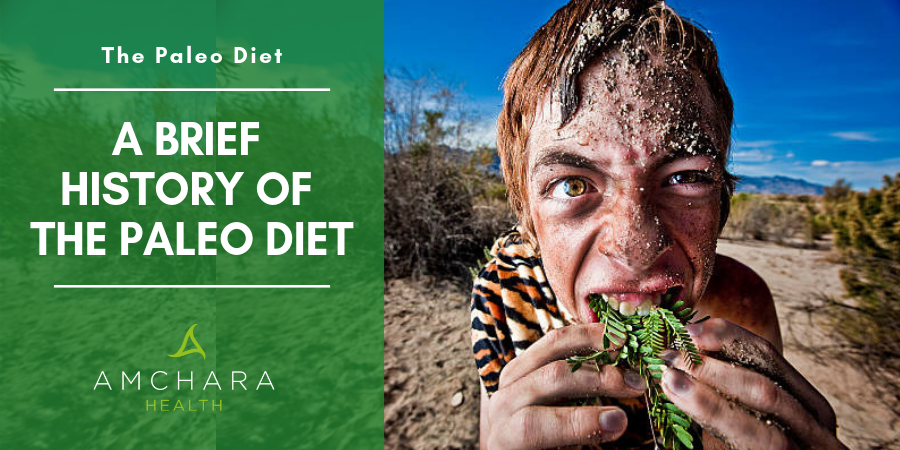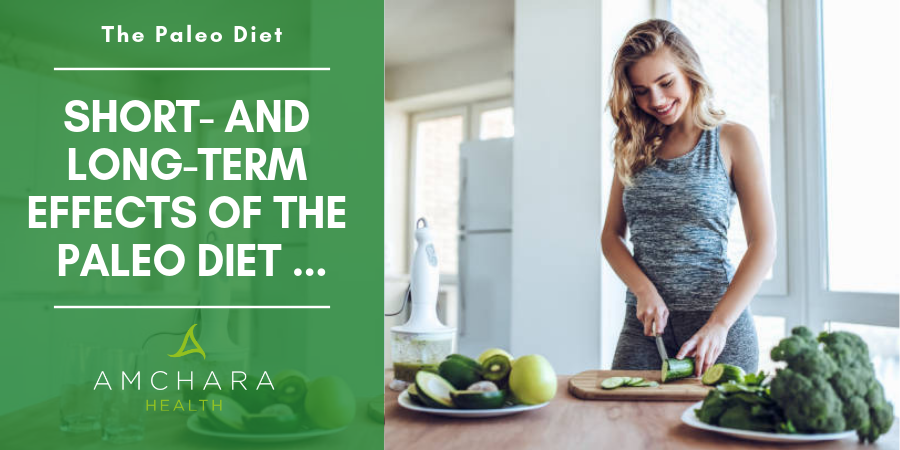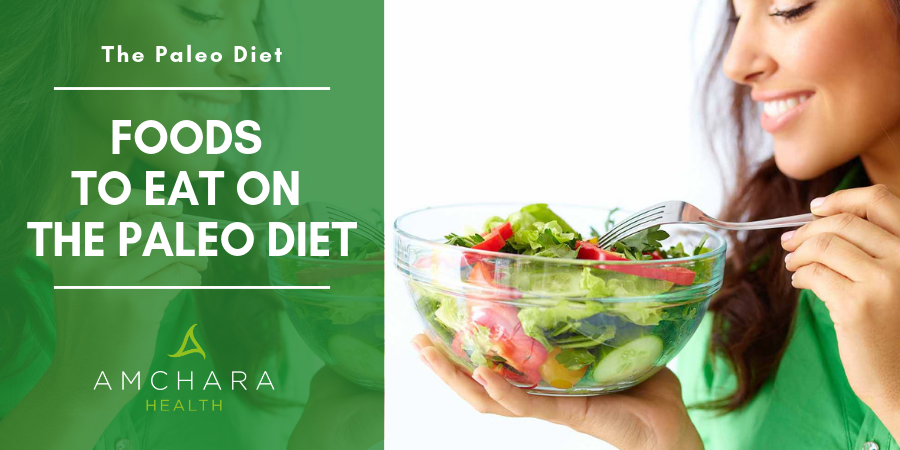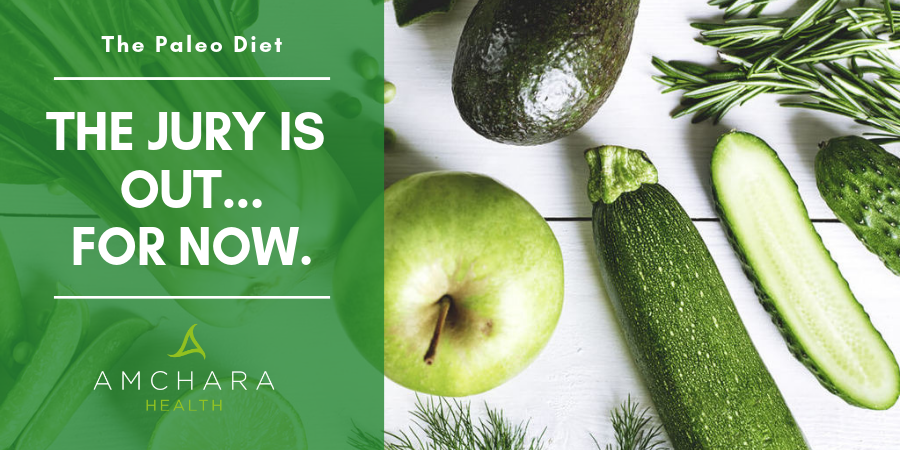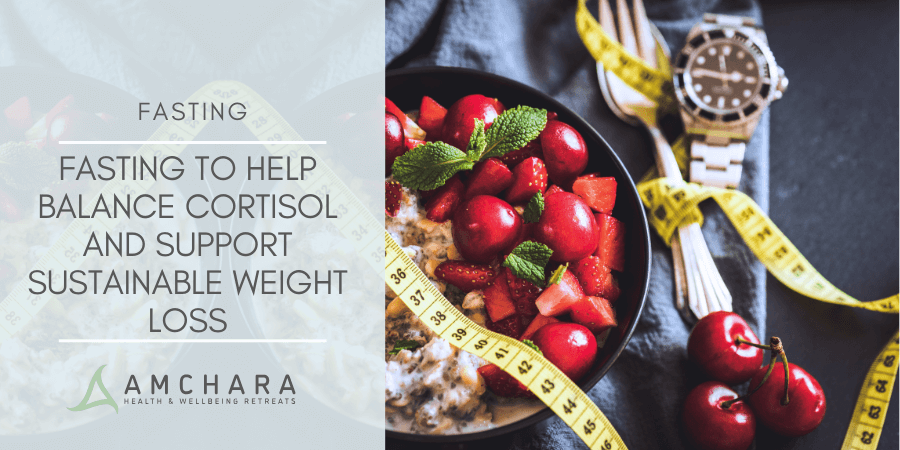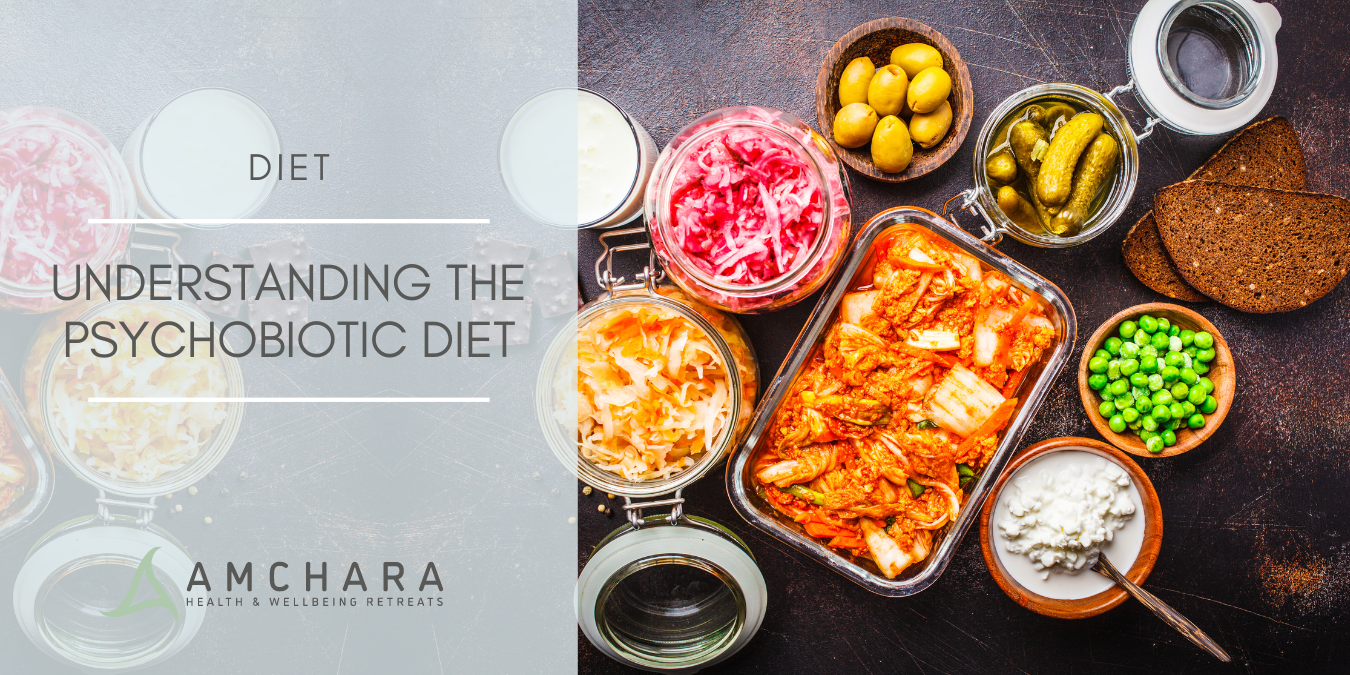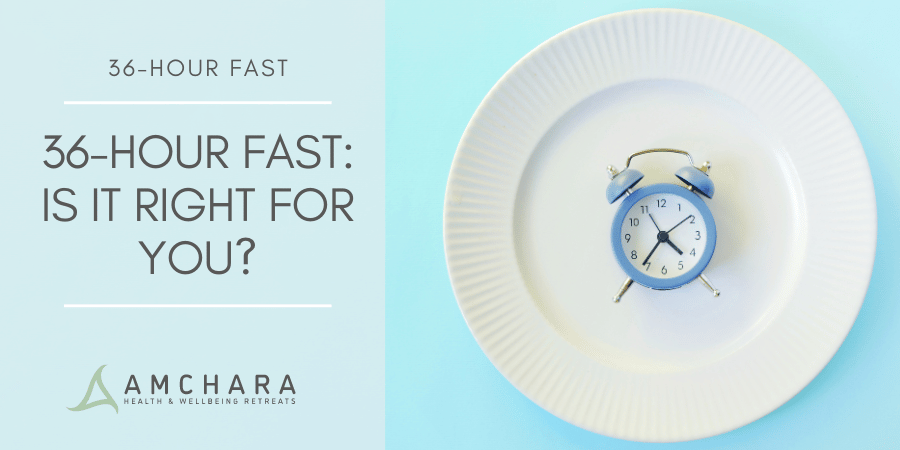Topics Covered in this article:
Also known as the caveman diet, the paleo or Palaeolithic diet remains one of the most popular yet controversial ways of eating.
In 2013, ‘paleo diet’ was the most popular search term relating to nutrition.
What is Metabolic Syndrome?
Hardly a day goes by without another headline reminding us how common our modern metabolic diseases have become.
Obesity, heart disease and type 2 diabetes are all products of our modern diet and sedentary lifestyles.
A cluster of risk factors – blood pressure, blood glucose levels and insulin resistance, triglyceride and HDL cholesterol levels, as well as waist circumference, which often occur together, are termed ‘metabolic syndrome’.
They predispose us to type 2 diabetes and cardiovascular disease.
It’s well known our modern diet which is packed with convenience foods containing lots of sugar, carbs and processed fat is linked to both inflammation and insulin resistance, a precursor to type 2 diabetes.
Why not, then, return to the diet our ancestors ate?
After all, they did not suffer from these modern diseases.
In this article we’ll have a look at the evidence supporting the paleo approach to eating, and whether it is right for everyone.
What are the origins of the paleo diet?
Put simply, the paleo diet returns to eating unprocessed foods which would have been part of our diet during the time our hunter-gatherer ancestors roamed the planet.
Now for a bit of history.
Hunter gatherers were prehistoric nomadic groups who used fire and hunted animals.
We know they were around from around 2 million years ago, but these were mankind’s ancestors.
The hunter gatherer lifestyle persisted through to Neanderthal man and eventually to Homo Sapiens.
It finally died out at the time of the agricultural revolution which started around 10,000BC, when humans became permanent agricultural communities.
Hunter gatherers do still persist in some remote parts of the world today.
The food available to hunter gatherers was very different to what we eat today.
These people ate grasses, tubers, fruits, seeds, nuts, fish and meat – anything that could be foraged.
Proponents of the paleo diet argue the changes in diet and lifestyle brought on by the agricultural revolution occurred too recently on an evolutionary time scale for our genes to adjust. (1)
The pace of change of our diet has been even more rapid over the last 50 years with the advent of convenience foods.
The modern diet differs fundamentally in terms of proportion of fat, carbs and protein, vitamin and mineral content, as well as the types of fat and fibre content.
All this impacts on how rapidly the food effects our blood sugar.
Since the agricultural revolution there have been around 400 to 500 human generations, but we remain genetically very similar to our ancestors.
The genes of modern hunter gatherers such as the Australian Aborigines do not differ significantly from the rest of the world.
In other words, humans should be better adapted to the diet our ancestors were exposed to during millions of years of evolution than to the diet we’ve been eating only for a mere 10,000 years.
Paleo eating is based on the assumption that our ancestors did not suffer from the same metabolic diseases as modern humans.
Nowadays, these types of diseases are virtually unheard of amongst the hunter-gatherers still persisting today such as the Hadza tribe of Tanzania.
What are the benefits of the paleo diet?
Without counting calories, adopting a paleo eating plan tends to lead to weight loss.
This is because the high fibre, unprocessed, low carbohydrate foods eaten are much less calorie dense than a typical modern diet.
Insulin Resistance
Insulin resistance is believed to contribute to metabolic syndrome.
The paleo diet has virtually no fast-releasing carbohydrates and can improve insulin sensitivity.
A scientist called James Neel way back in 1962, suggested insulin resistance – the reluctance of our cells to listen to insulin and therefore take on board sugar to use as energy – may have evolved as an adaptation to low levels of carbohydrates eaten by our ancestors in times of famine.
Known as the ‘thrifty gene’ hypothesis, (2) Neel suggested that when food was plentiful and our ancestors put on weight, they became more insulin resistant.
This helped them survive lean times by reducing sugar uptake by cells, leaving it for brain fuel.
The agricultural revolution made carbohydrate-rich and calorie-rich crops plentiful and they became staple foods.
Recently, modern food processing has made huge quantities of simple carbohydrates available.
Although genetically we do adapt to changes in diet, many of us may still carry gene variants that tend us towards thriftiness and insulin resistance, and therefore susceptible to diabetes and obesity. In these people, eating lots of processed carbohydrates can lead to blood sugar problems and metabolic disease.
Although the thrifty gene hypothesis may not completely explain this complicated situation, it’s an interesting concept.
Inflammation
Chronic inflammation is linked to increased incidence (3) of metabolic disease.
Generally, processed foods, sugar and refined carbohydrates (4) and some grains are also linked to inflammation.
Processed foods usually contain more omega-6 fatty acids than omega 3.
This is because omega 3 fats are particularly prone to spoiling, and food manufacturers need to ensure processed foods keep for long periods.
An imbalance of omega 6 and 3 fats leads to inflammation. (5)
The fat content of the paleo diet is naturally high in Omega 3.
The paleo diet also has been shown to favourably effect blood pressure, cholesterol, triglycerides and liver fat, as we’ll see when we look at the research that’s been carried out on the diet so far.
Evidence for the effectiveness of the paleo diet
According to paleo diet expert paleomom, the diet is ‘far from a historical re-enactment of the stone age and is supported by contemporary knowledge about biology and physiology’.
Many of the initial studies were carried out on animals.
For example, one study on pigs (6) found a paleo-type diet as opposed to a cereal based diet led to greater insulin sensitivity, lower inflammatory markers and lower blood pressure.
Animal studies like this can provide us with some clues, but nowadays more and more human trials of the paleo diet are being conducted.
In one study, eight people who usually ate a Western diet high in processed foods switched to a paleo diet for eight weeks.
The quantity of food was not restricted.
Study participants had an increase in an immune signalling substance called interlukin-10, which is anti-inflammatory.
Low levels of interleukin-10 are linked to an increased risk of heart attacks. (7)
One study on healthy volunteers (8) found after just three weeks on a paleo diet, weight decreased by an average of 2.3kg, body mass index by 0.8 and waist circumference by 1.5cm.
Their blood pressure also reduced slightly.
Other short-term studies on healthy people (9) have found reductions in total and LDL cholesterol, triglycerides, insulin and blood pressure even after just 8 days.
One relatively long-term study (10) looked at the dietary choices of over 21,000 people over 6 years.
Researchers found people following diets similar to the paleo diet had a lower risk of mortality from all causes including cancer and cardiovascular disease.
Can the paleo diet reverse Metabolic Syndrome?
Several studies have examined the effects of a paleo diet on metabolic syndrome.
One piece of research (11) looked at men with heart disease and high blood sugar or type 2 diabetes.
They were given a paleo diet for 12 weeks.
The diet resulted in improved glucose tolerance, weight loss of on average 5kg, and 5.6cm lost from the waistline.
Despite food being unlimited, the subjects ate over 450 fewer calories per day than a control group.
Another study (12) over just two weeks involving people with metabolic syndrome found the diet lowered blood pressure, total cholesterol and triglycerides, and raised beneficial HDL cholesterol.
An impressive result for such a short space of time.
Research has also looked at the effectiveness of the paleo diet over three months compared with a medically-recommended diet designed to control type 2 diabetes.
3kg more weight was lost on the paleo diet, and 4cm extra was lost off subjects’ waistlines.
Blood sugar levels and triglycerides also decreased, while HDL cholesterol decreased more on the paleo diet than on the diabetes diet.
Other research involved obese postmenopausal women (13)
After 5 weeks they had lost an average of 4.5kg, but importantly in relation to the risk of metabolic syndrome, the fat content of their liver cells reduced by an impressive 49%.
Although the participants were not told to restrict calories, they reduced their calorie intake by up to 900 calories per day.
Why is the paleo diet beneficial?
The paleo diet allows only unprocessed animal and plant food – meat, fish, eggs, vegetables, fruits, nuts and seeds.
It does not allow any processed foods, sugar, dairy, legumes or grains.
Several components of the modern diet are known to encourage insulin resistance and inflammation.
Modern processed foods deliver a huge amount of salt.
Excess salt can result in increased inflammation (14) and is connected with autoimmunity.(15)
The low levels of omega 3 fats in processed foods, coupled with high levels of omega 3 fats can also increase inflammation.
Research suggests (16) immune cells can mistake certain types of saturated fats common is processed foods as bacterial invaders.
This is because bacteria contain saturated fat and this is what the immune cells are primed to react to.
Our dietary choices don’t just affect us, however. Just as we are a product of the dietary choices of our parents and grandparents, our diet will affect our descendants.
For example, immune cells that over or under react as a result of diet can pass that tendency (17) down to the next generation.
Paleo in practice
The paleo diet basically avoids anything that’s been made in a factory, as well as all grains, legumes and some starchy vegetables.
On the diet you can eat:
- Meat – beef, lamb, chicken, turkey, pork, game meat. Ideally choose lean, grass-fed, organic meat
- Fish and shellfish, wild-caught if possible
- Eggs, ideally free-range or biodynamic
- Vegetables – plenty of fresh, not packaged vegetables, apart from potatoes
- Fresh fruit
- Fresh nuts and seeds
- Herbs and spices
- Cold-pressed fats and oils such as extra virgin olive oil and coconut oil.
However, if opting for a paleo diet you need to avoid:
- Processed foods
- Sugar in any form, including high-fructose corn syrup, sweets, ice cream, cakes, biscuits, pastries and honey
- Soft drinks and fruit juices
- Grains including wheat, spelt, barley, rye, rice, oats and breads, pastry and pasta
- Dairy products – milk, yogurt, cheese and butter
- Legumes – beans, lentils, peas, peanuts
- Artificial sweeteners like aspartame, sucralose, saccharin, xylitol
- Some vegetable oils, such as soybean oil, sunflower oil, corn oil, grapeseed oil and safflower oil, margarine and trans fats (are often called hydrogenated or partially hydrogenated fats)
- Potatoes, sweet potatoes, yams, turnips, etc.
From its original beginnings, the paleo community has now evolved and some proponents allow some grass fed butter and certain other dairy products, potatoes and sweet potatoes and gluten free grains.
On a paleo diet for breakfast you could have eggs and fruit or salmon with spinach;
Lunch could be chicken or tuna salad, and dinner beef or salmon with vegetables, or a stir fry.
Snacks could include a handful of nuts, fruit or crudités.
There are plenty of amazing paleo recipes out there – try this one for delicious paleo bread , which is grain free, gluten free and lactose free.
It’s been created by Magalie, raw food chef and nutritional therapist at Amchara Gozo .
Exercise is important while following a paleo diet.
Our hunter gatherer ancestors had to forage for their food after all and were not sedentary as many of us are nowadays.
Is the Paleo Diet for Everyone?
Paleo eating is not without its critics.
As the diet restricts entire food groups such as grains and legumes, it appears to be less heathy than a rounded diet.
It could be that the beneficial effects of a paleo diet are simply a result of decreasing sugar, modified fats and processed foods rather than the finer specifics of the diet.
The fibre content may slow sugar absorption and would have a beneficial impact on the microbiota.
Concerns have been raised about the diet’s high content of animal fat, protein and low levels of calcium.
However, the paleo diet is rich in magnesium, which helps us to utilise calcium .
Some opponents of the paleo diet are concerned the high red meat content could increase the risk of cardiovascular disease, particularly for diabetics.
Studies have suggested red meat is connected with heart disease .
However, other researchers have commented that confounding factors may be at work, such as way the meat is cooked and how many fresh vegetables are eaten in the remainder of the diet.
The omission of grains has also come under fire.
Research now suggests wild grains may have been eaten by hunter gatherers 30,000 years ago, well before farming was introduced.
In any case, there was never a single Palaeolithic diet.
Food choices varied with geography and climate.
Our ancestors had very different type of stress in their lives, and industrial pollutants were absent, so really we are not comparing like with like.
While the science is encouraging for the beneficial effects of the paleo diet, it could be argued that life expectancy for foraging populations was short – it’s estimated to have been only around 40 years.
Obviously, therefore, they didn’t suffer from age-related degenerative diseases.
However, according to a fascinating paper on author Robb Wolf’s website, the paleodiet, historians think this life expectancy actually halved with the onset of the agricultural revolution.
Incredibly, people only lived on average 18 short years in 1667.
Could this have been partly connected with a rapid change in eating habits in favour of carbohydrates?
The jury is out, for now.
Conclusion
An impressive amount of research now links the paleo diet with improvements in health, particularly relating to weight maintenance and metabolic syndrome.
If you are overweight, insulin resistant or have high blood pressure you might want to think about trying the paleo diet.
If you suffer from type 2 diabetes, it’s best to consult your GP or a naturopathic practitioner before making any dramatic changes to your diet.
However, the diet is fairly restrictive, and some people may find it hard to follow.
It’s also possible that a slightly less strict version along the lines of the Mediterranean diet, which does not restrict grains and tubers, may be just as beneficial.
READ NEXT:

